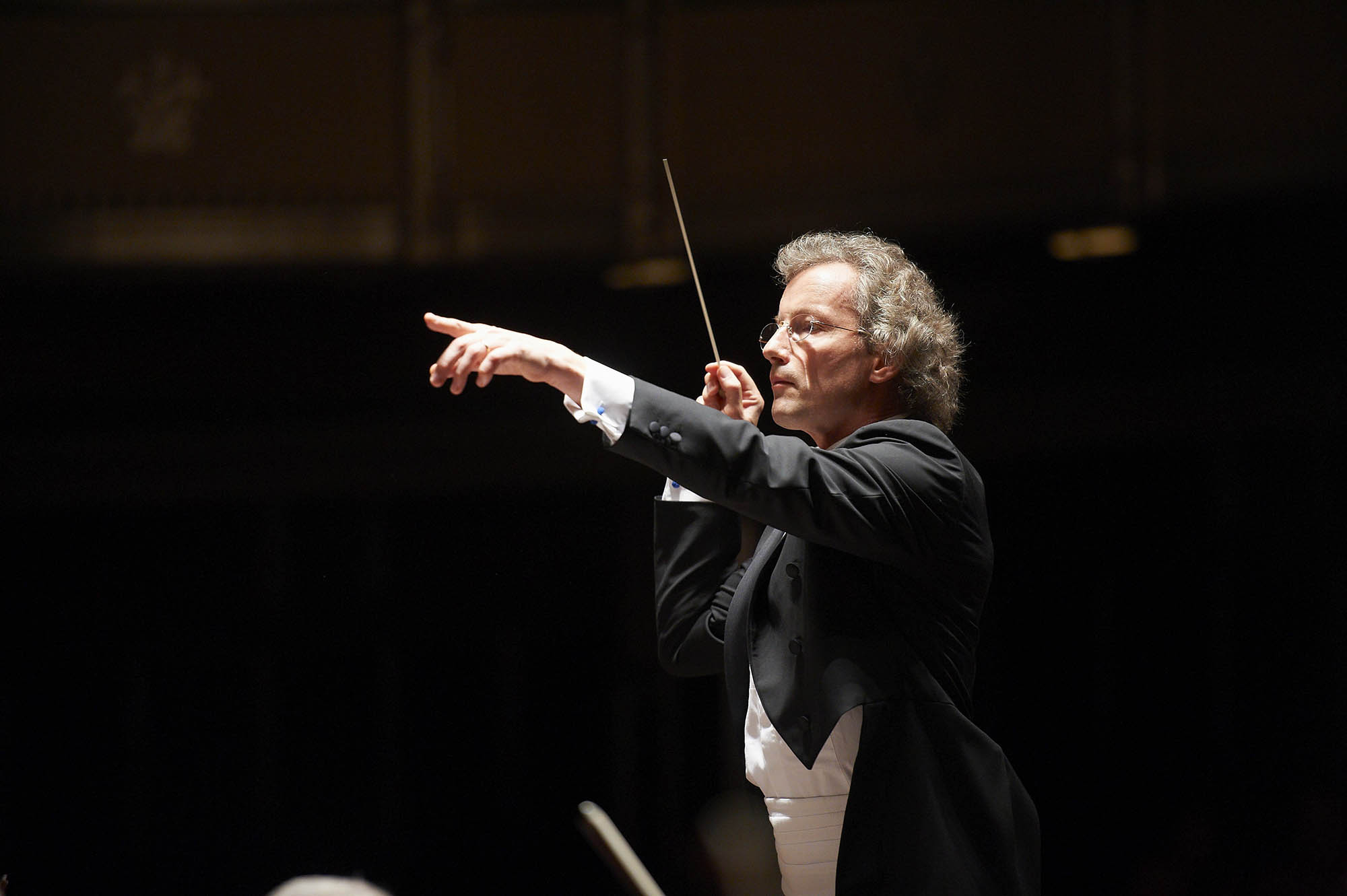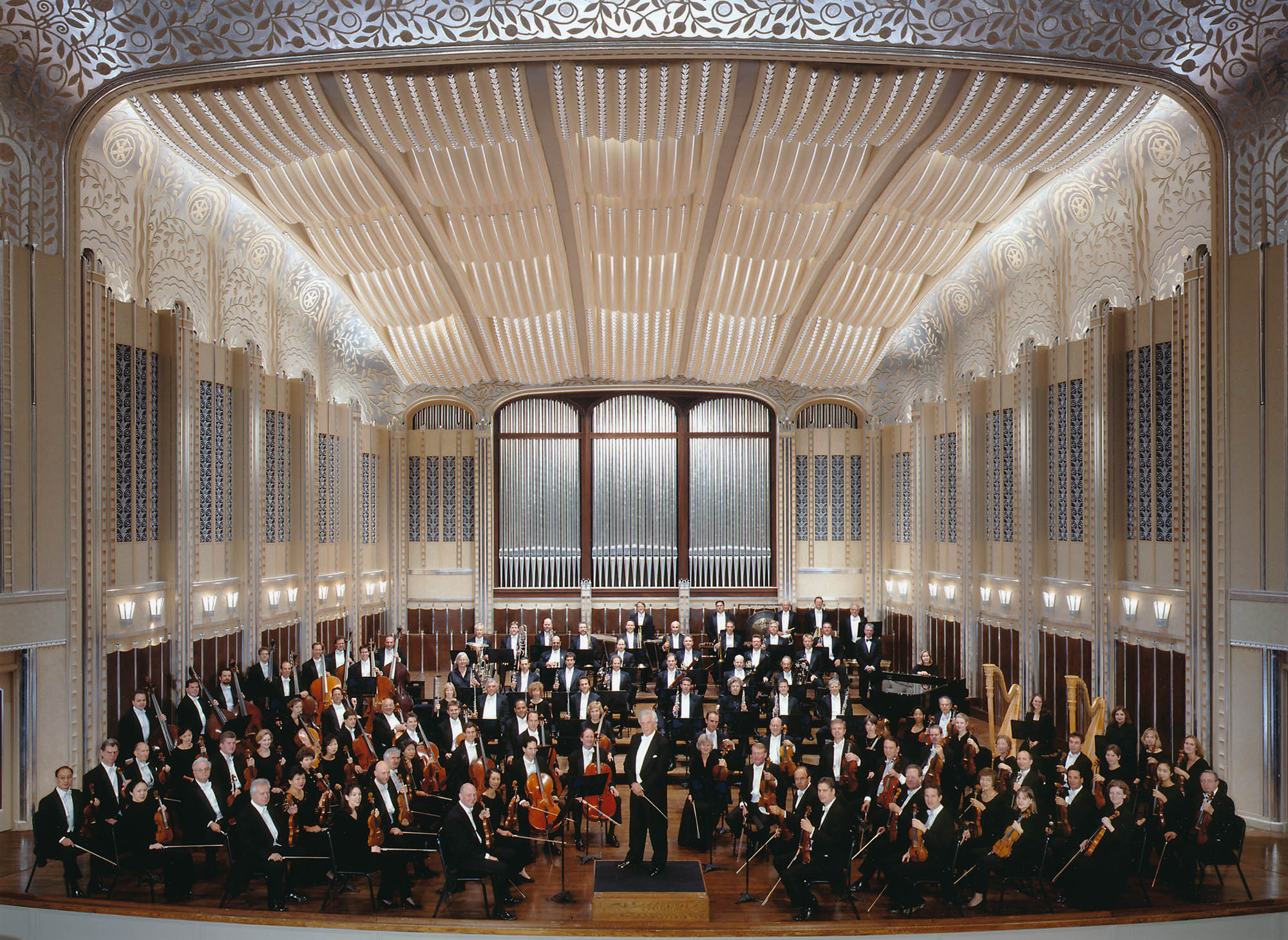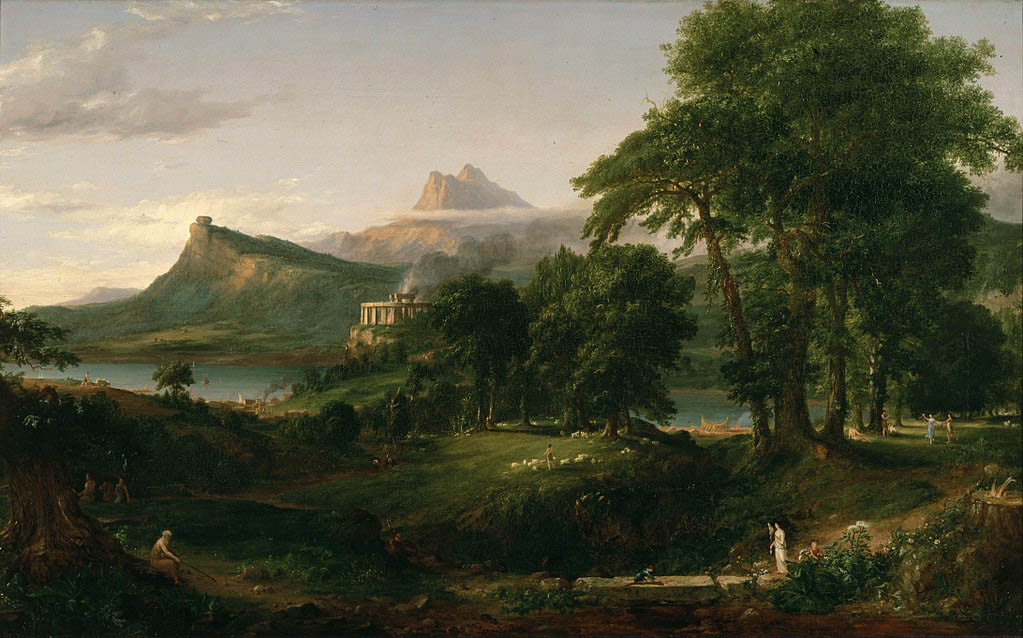Beethoven’s Pastoral Symphony premiered on the same concert as the Fifth Symphony (December 22, 1808). The two works were quite different: Whereas the Fifth was a difficult journey from darkness to light, the Pastoral was a genial, warm-hearted journey through the countryside. The Pastoral symphony is the most programmatic of Beethoven’s symphonies: Each of its five movements bears a title loosely depicting the experiences of an anonymous figure moving through the countryside. However, the Pastoral is one of Beethoven’s most forward-looking compositions, as Music Director Franz Welser-Möst describes in the video below.
Music Director Franz Welser-Möst discusses another side to Beethoven’s style — pastoral and distinctly non-heroic — and connects it to Romantic-era ideas of sensation and feeling.
 Color drawing by Franz Hegi (1839), depicts Beethoven composing the Pastoral while resting near a stream.
Color drawing by Franz Hegi (1839), depicts Beethoven composing the Pastoral while resting near a stream.
There seems to be a conscious effort by Beethoven to prioritize sensation and emotion over form and literal depictions of nature in the Pastoral. According to Beethoven scholar Lewis Lockwood, Beethoven sought to find the best of both worlds in his Pastoral: to illustrate these naturalistic scenes through music that would paint them in tones, but, above all, to have the music be, in Beethoven’s words, “‘understood without a description, as it is more feeling than tone-painting.’”1 Essentially, by drawing on musical tropes of nature to cue a listener into the general ambiance, Beethoven could focus his compositional efforts on the expression of emotion. This is what makes the symphony truly Romantic. Composer Robert Schumann felt as much, writing that Beethoven’s remarks about the symphony provided “ ‘an entire aesthetic system for [future] composers.’”2
Whereas works like the Eroica or Egmont celebrate heroic individuals and their struggles, the Pastoral ultimately seems to celebrate the strength of community and harmony – whether it be of nature or people. Franz compares the last movement of the Pastoral to the first of the Eroica: Both of their main themes are derived from the notes of one chord, which he describes as, “the harmony itself is the theme.” However, both themes are very different, which suits Beethoven’s aims in each symphony. The opening theme of the Eroica constantly fights off dissonance, and is about heroism, conflict, and victory; in contrast, the theme of the last movement of the Pastoral celebrates consonance, signifying, as described, the harmony among different people.
 Franz conducting a fiery performance at Severance Hall on September 23, 2010. This recording comes from one of his first concerts (and the first featuring Beethoven) as Music Director. Photograph by Roger Mastroianni.
Beethoven, Symphony No. 6, IV. Allegro, “Thunder, Storm.”
Franz conducting a fiery performance at Severance Hall on September 23, 2010. This recording comes from one of his first concerts (and the first featuring Beethoven) as Music Director. Photograph by Roger Mastroianni.
Beethoven, Symphony No. 6, IV. Allegro, “Thunder, Storm.”
The Cleveland Orchestra, Franz Welser-Möst
Archival Recording: Severance Hall, October 3, 2002
 A portrait of the Orchestra and von Dohnányi in Severance Hall from his final season as music director [2001-02]. Photograph by Roger Mastroianni.
Beethoven, Symphony No. 6, V. Allegro, “Shepherd’s Song. Cheerful and Thankful Feelings after the Storm.”
A portrait of the Orchestra and von Dohnányi in Severance Hall from his final season as music director [2001-02]. Photograph by Roger Mastroianni.
Beethoven, Symphony No. 6, V. Allegro, “Shepherd’s Song. Cheerful and Thankful Feelings after the Storm.”
The Cleveland Orchestra, Christoph von Dohnányi
Archival Recording: Severance Hall, December 12, 1986
 “The Arcadian or Pastoral State” by Thomas Cole, 1836.
“The Arcadian or Pastoral State” by Thomas Cole, 1836.
In line with Franz’s musical analysis and the festival’s promethean theme, musicologist Richard Will has interpreted the Pastoral (composed during the heyday of Napoleon’s empire in Europe) as an “effort to conjure a world protected from violence, degradation, human foible” in which the people escape calamity by the “apparent intervention of a higher power” and are inspired to “redeem [themselves].”3 If works such as the Eroica or the Fifth Symphony are about heroic conflict and the move from darkness to light, then this symphony is about the “utopia” that emerges from that struggle: a beautiful portrait of a “pastoral arcadia.”4
1 Lewis Lockwood, Beethoven: The Music and the Life (New York: W.W. Norton, 2005), 225.
2 David Wyn Jones, Pastoral Symphony (New York: Cambridge University Press, 1995), 82.
3 Richard Will, The Characteristic Symphony in the Age of Haydn and Beethoven (New York: Cambridge University Press, 2002), 156-157.
4 Maynard Solomon, Beethoven, second revised edition (New York: Schirmer Books, 1998), 404
Alexander Lawler is a Historical Musicology PhD student at Case Western Reserve University. This is his third year working in the Orchestra’s Archives, having previously written “From the Archives” online essays (2015-2016) and designed a photo digitization and metadata project (2016-2017).

Symphony No. 8
The Eighth Symphony generally has been regarded as the slightest of Beethoven’s mature symphonies because of its short length, lighter tone, and frequent return to the musical styles and forms of the eighteenth century.
Read more >

Leonora Overture No. 3
Fidelio (1805), Beethoven’s only opera, is a celebration of freedom. In the opera, Florestan has been imprisoned by the tyrant Don Pizarro.
Read more >

Symphony No. 2
Beethoven first realized he was becoming deaf in the summer of 1798, at age twenty-seven. After an initial episode of total deafness, Beethoven found that his hearing had become filled with an unending “maddening chorus of squealing, buzzing, and humming.”
Read more >

Symphony No. 6
Beethoven’s Pastoral Symphony premiered on the same concert as the Fifth Symphony (December 22, 1808). The two works were quite different: Whereas the Fifth was a difficult journey from darkness to light, the Pastoral was a genial, warm-hearted journey through the countryside.
Read more >

Grosse Fuge
The Grosse Fuge (Great Fugue) is Beethoven’s most complex work. It was originally to be the last movement of his String Quartet No. 13. However, it unluckily proved to be both technically challenging for the performers and bewildering to the audience, and was, instead, turned into its own stand-alone work.
Read more >

Symphony No. 9
Beethoven’s Ninth Symphony stands as the culmination of Beethoven’s twenty-four-year career as a composer of symphonies. The Ninth both sums up Beethoven’s artistic career and, with the choral finale, daringly points the way forward to new conceptions of what a symphony could say and be.
Read more >